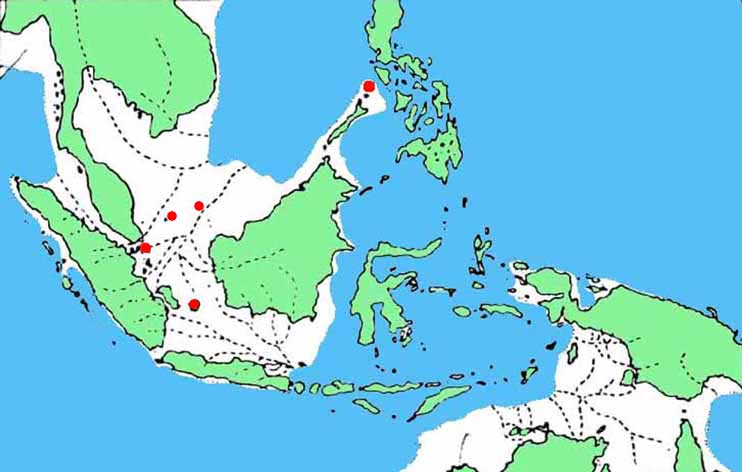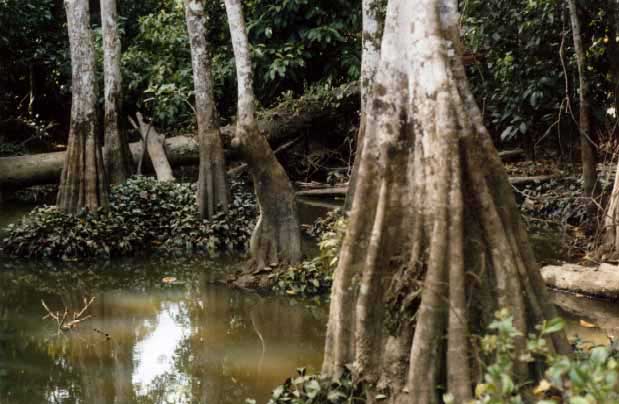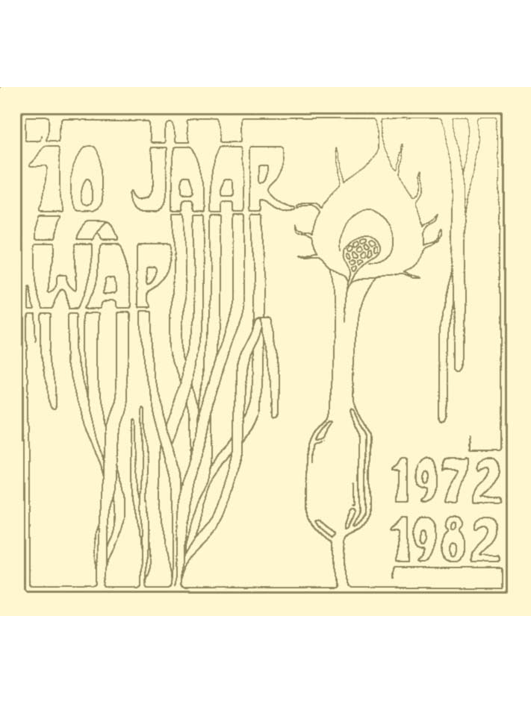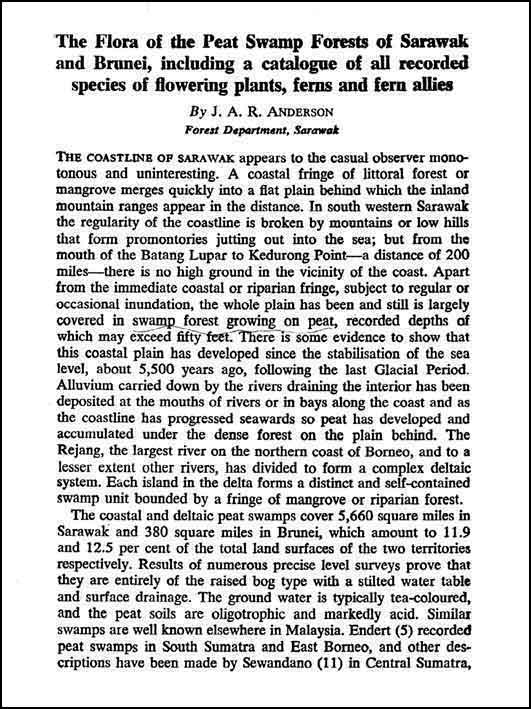| |
Botanical Themes |
Keep in mind that most of the botanical aspects presented here are light weight. The
purpose is to illustrate the typical details in so far relevant for Cryptocoryne.
Look for a good textbook on botany for the underlying concepts!
|
| |
| Click on the picture to enlarge, click on the NAME to go to the page |
 |
Distribution of Cryptocoryne in SE Asia
is not restricted to the main land masses. Just realize that for 10,000 years, the last
glacial period, the sealevel was about 60 m lower than today. The map presented shows
in blue the sea at that glacial period. Green are current 'dry' areas. The white area
is the land mass (with the 'green' areas) at that time, called the Sunda plat. The dotted
lines are the main rivers at these days as can still be seen on the sea bottom. The red dots point to today islands where several Cryptocoyne are found. |
 |
Habitats. Cryptocoryne plants grow at different
spots, each species adapted for 'best fit'. They grow in the lowland forests, in the acid peat
swamp areas as well in limestone area's. In small streams and some in broad rivers. Also the (fresh water) tidal areas
are habitats for Cryptocoryne.
Some Cryptocoryne were able to survive in or recolonize plantations. But the deforesting in almost all countries goes very fast and much species are seriously threatened in there habitat.
See the habitat page and read an 'old' lecture Niels Jacobsen gave in 1986 at Wageningen University ( Document service )
photo de Wilde |
 |
Fine Arts
The Fine Arts page is a bit controversary, as most
examples are not as fine as you would like. Nevertheless it is stunning to see what is
made! A special place is reserved for Ike Zewald and her beautifull botanical drawings
of Cryptocoryne. See the drawings in De
Wit´s books by Ike Zewald.
tile design: Jelle Reumer
|
 |
Document service
For most people it is rather difficult to find literature on Cryptocoryne as books and magazines are scattered over many libraries all over the world. Not everybody will like to read these texts as a hobby, but the Document service may help you. See also the Link page.
Andersen 1963 |
 |
Chromosomes
A mayor breakthrough in the taxonomy of Cryptocoryne happened in the 80's of the past century when the technic of counting chromosomes was applied to this genus. Though
sometimes difficult to explain, it was shown by Jacobsen that there exist a quite simple
grouping of plants.
One of the most interesting aspects is the frequently encountered polyploidy, when the
basic chromosome number is doubled or more. For example, in C. cordata there
exists a range of different plants, with chromosome numbers of 2n = 34, 68, 85 and 102.
See the chromosome pictures and look at the chromosome and pollen fertility counts table.
photo Arends |
 |
Synonyms
Taxonomy in Cryptocoryne is a quite
dynamical business. Lots of changes are made in the past decades. Popular aquarium plants had to
be renamed. The last decads it has grown clear that there is much
variation as more about the distribution came available. It also became clear that there are a lot of natural hybrids. Look at the SYNONYMS page to see all these 'old' names. |
 |
Who's Who?
The Who's who page will need quite a long time to search for
details on people who were ever involved with the small aroids of the genus Cryptocoryne.
Can you imagine how Odoardo Beccari, a famous Italian botanist, sailed on Borneo around
1860? |
Updated July 2012 |
 |
|